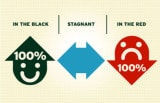Aidan Donnelly looks at some of the key drivers of growth across global economies as the need to grow revenues becomes more acute.
Ask any group of investors what are the arguments for buying equities and among the list – a potentially long list depending on how many you ask – will be the outlook for company sales and profits.
As would be expected a key driver of this is the growth of the various economies around the world.
Over the last few years we have seen limited sales/revenue growth from companies as the slow economic recovery forced them to focus on cost reductions and efficiency gains to drive profits. Now, with the majority of these productivity gains achieved, the need to grow revenue is more acute, and so the importance of global economic growth.
In the financial markets when it comes to assessing the strength of the global economy we rely so much on the forecasts of an army of economists and the plethora of economic statistics released each month. But if you are looking for a more tangible read on what’s going on, few can beat the insights from the company managements that operate at the coalface day in and day out. And those most attuned to the pulse of the economy? The good old ‘metal bashers’ in the industrial sector.
It was with this in mind that I recently travelled to the US to meet with managements of several industrial companies. Now, the days of the US industrial company ‘bashing metal’ for a profit are long gone, replaced by the manufacturing of highly engineered components and process controls and software. Although their insights are no less valuable, what are the issues playing on their minds currently?
The overriding sentiment coming through from companies was the broader acceptance of a sustained low-growth global environment for 2015.
There are, of course, many ‘puts and takes’ in formulating this outlook but when compared to the outlook this time last year, companies generally held a more subdued view on global growth prospects entering next year. And you will not be surprised to hear that the most significant change in sentiment over the last 12 months has been on the prospects for European economic growth.
Best house in a bad neighbourhood
For the developed markets, the US economy sits at the top of the leaderboard. The economic strength of the last few years is widely anticipated to continue, if not improve modestly, in 2015. And where is this strength coming from?
The automotive and housing markets remain in good shape, and a relatively healthy consumer is also contributing. After many years in the doldrums, the non-residential or commercial construction markets appear to be steadily gaining momentum. But the US is not without its issues and chief amongst them are problems in its transport infrastructure. Many of the trucking and logistics companies highlighted the chronic shortage in truck drivers and the knock-on effect this is having on other parts of the transport network. Changes in industry regulations, an exodus of drivers through retirement, and the general unattractive nature of the lifestyle to potential new recruits have seen driver numbers fall.
There is an increasing appetite for strategic acquisitions with the primary hurdle being the prices sought by sellers.”
Whilst multiple years of under investment in the highway network and bottlenecks at the major ports and rail depots are making the job more difficult for those that remain. Many companies cited the need for urgent investment if the lifeblood of the economy is not to grind to a halt… literally.
Europe? not so good
And what of the other major economic region in the developed world? Depending on who you ask, Europe is seen as stable to eroding. The year ahead was largely framed as ‘limited growth’ from the current low levels, though the uncertainties and risks are clearly heightened.
Not surprisingly, the major concerns revolved around the pressures from geopolitical issues (Eastern Europe/Russia, Middle East), macro-economic headwinds, and any persistent strength in foreign exchange rates.
While most company managements were not happy with the recent move in the US dollar, most conceded that at current levels it was manageable – but any further strength would be problematic for them on a competitive basis.
With limited direct exposure to the Russian economy, the fallout from that side of the current debacle is small, but what is of greater concern is the knock-on impact it has on economic growth in the rest of Europe, where exposure is larger.
And to the East …
Looking further east, Asia and emerging markets remain mixed. In the main, growth is expected to be positive in 2015, albeit at a slightly lower rate than we have seen in 2014.
In China, the construction and industrial segments are softer than recent years, but with the rise of the middle classes – not just a Chinese phenomenon – consumer spending is visibly expanding and is having an impact in areas as varied as food safety, packaging, automotive and logistics.
With the recent political issues in Brazil, the outlook from companies was somewhat subdued for that country, and it was a similar story for much of Latin America, though Mexico was mentioned in slightly more positive tones.
Crude analysis
Given the fall in the price of crude oil and gas exposures and capital investment in these areas were dissected heavily as a potential risk factor going forward. Investors are eager to quantify and segment (production vs pipeline/transport vs refining) the potential risk from falling oil prices on the outlook for companies into next year.
Obviously the exploration and production segment harbours the most perceived downside risk, though most companies have yet to see an impact. Additionally, companies weighted toward production-focused vs exploration-focused upstream exposure appeared more at ease, while optimism around continued strong investment in the other parts of the value chain was generally maintained.
When it comes to what managements want to do with their growing cash war chests, capital deployment preference remains heavily weighted toward mergers and acquisitions. There is an increasing appetite for strategic acquisitions with the primary hurdle being the prices sought by sellers – numerous companies mentioned walking away from deals due to unrealistic sellers’ expectations and unfavourable price/terms. Notwithstanding this, deal pipelines are full and companies have been bolstering their internal development/integration resources in anticipation of future deals.
As we look into 2015, these doyens of industry are optimistic about their prospects, albeit cautiously so. With many issues and risks still on the horizon nobody is going to be too gung-ho about the future. But if these fail to materialise, then 2015 might not be too bad at all… fingers crossed.

Aidan Donnelly is a senior equity analyst at Davy Private Clients.
Views expressed in this article reflect the personal views of the author and not necessarily those of Davy or Business & Finance. Follow him on Twitter @aidandonnelly1.






